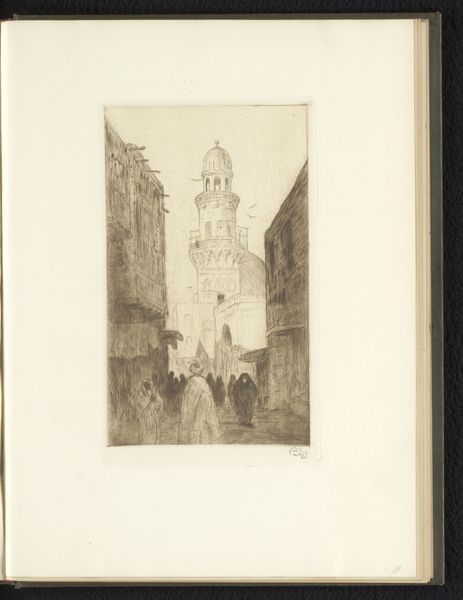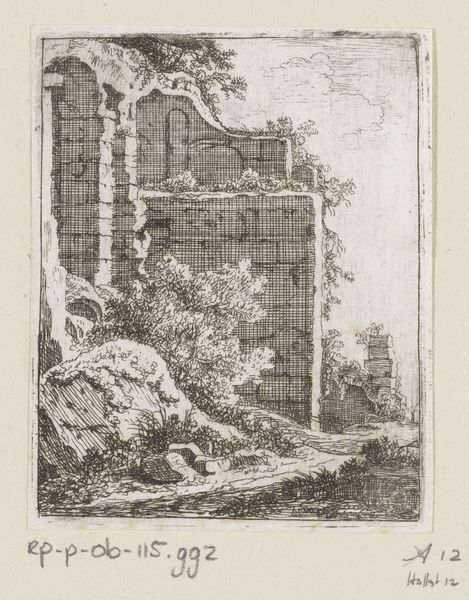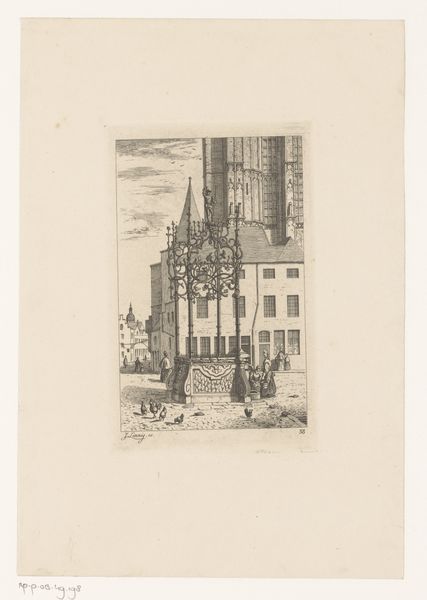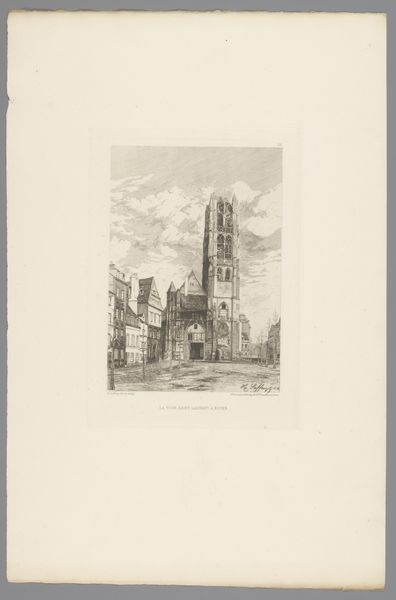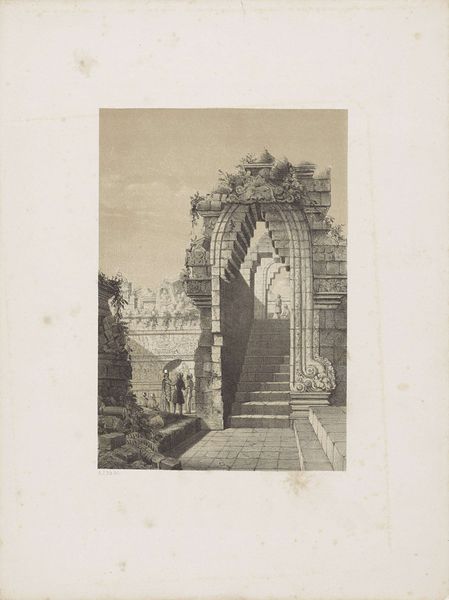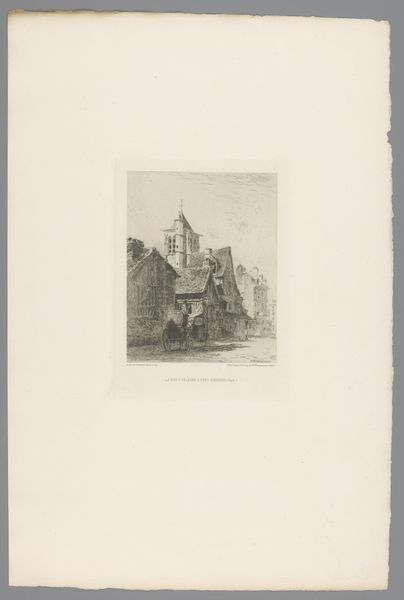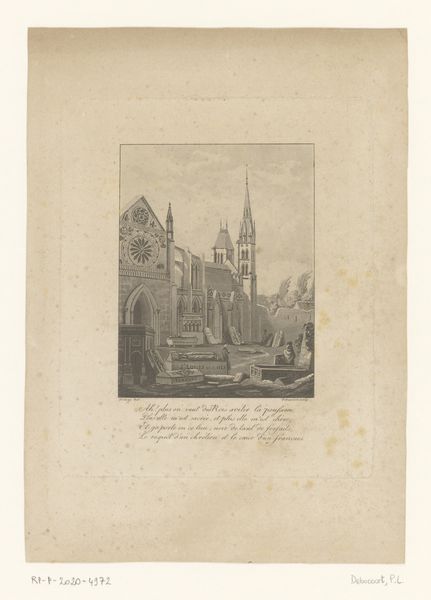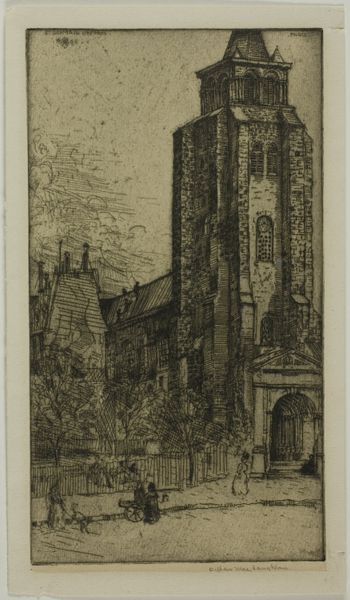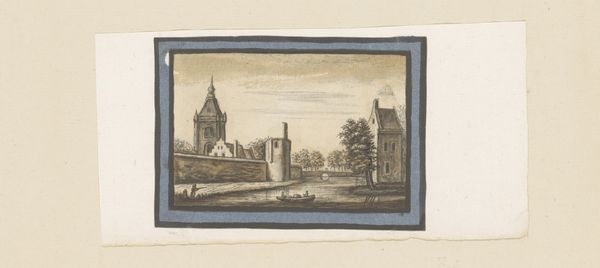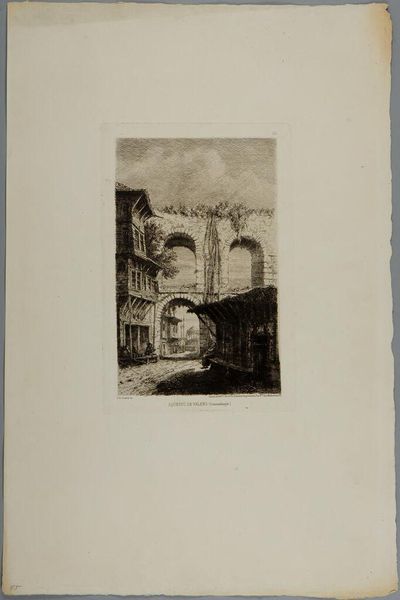
drawing, print, etching, paper
#
drawing
#
medieval
# print
#
etching
#
landscape
#
paper
#
cityscape
Copyright: Public Domain
Curator: This etching by Axel Herman Haig, titled "St. Pierre, Caen," dates back to 1879 and resides here at The Art Institute of Chicago. I’m immediately struck by the dramatic composition, the sheer verticality of that spire piercing through the sky. There’s a certain romantic grandeur to it. Editor: Grandeur indeed! And confinement, oddly enough. It's almost as though we're viewing it from a secret chamber, the heavy stone archway framing the delicate spire like a captured dream. The artist uses a restricted palette, which further adds to this slightly solemn impression. Curator: That framing arch, of course, is deliberately chosen. Arches carry symbolic weight. They represent thresholds, transitions, the passage of time, but also provide architectural framing to a view steeped in medieval history. The church itself serves as a visual anchor, anchoring the viewer's gaze skyward toward a promised reality of some kind. Editor: The textural contrasts are fascinating, aren't they? The smooth, almost pristine quality of the sky above against the intricacy of the gothic architecture—the spire, the filigree details… it's almost obsessive in its rendering, but also very satisfying. Curator: Consider the layers of history embedded here. We have a church constructed during a particular period, etched decades ago in another era when historic preservation and a longing for the past were cultural preoccupations, and now presented to us as a window into the past itself. The spire points to centuries of evolving religious symbolism, human innovation, cultural beliefs, and the enduring appeal of sacred spaces. The etching suggests an enduring hope, which towers above all. Editor: Yet there is also, at least to me, a slight melancholy clinging to it. Is it the sepia tones, the fineness of the lines, or something else? It speaks not just of hope but a sort of reverent quiet, like an echo of something lost and now fondly remembered. The fact it is an etching contributes; there’s something intrinsically delicate and temporal about works on paper. Curator: Yes, the act of etching, with its meticulous scratching away to reveal light, carries with it connotations of laborious construction but, maybe even better yet, the careful, intentional communication of a historical story. Editor: It is quite extraordinary how much complexity of design and time has been caught. Looking again, this piece presents not merely the surface of architecture, but the enduring presence of a community, shaped by collective memory and the enduring need to reach beyond.
Comments
No comments
Be the first to comment and join the conversation on the ultimate creative platform.

